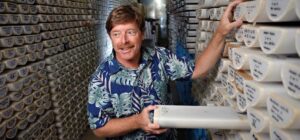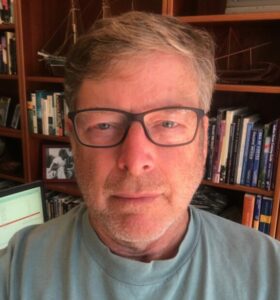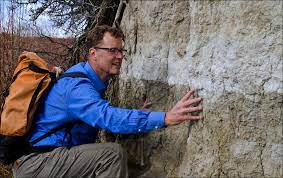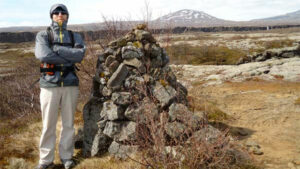
 The Lecture – Cascadia and San Andreas Earthquakes: a link?
The Lecture – Cascadia and San Andreas Earthquakes: a link?
The Quimper Geological Society welcomes back Chris Goldfinger to a ZOOM ONLY lecture on February 21, 2026. Chris has recently published an article in Geosphere and will join us to present new data showing a relationship between the Cascadia subduction zone and the northern San Andreas fault.
MORE INFORMATION will be posted soon.
Login for the ZOOM only lecture will be provided through email ten days and two days prior to the event (if you are registered as a member). Otherwise, the login will be posted later on this page.
About the Speaker
 Dr. Chris Goldfinger, emeritus professor at Oregon State University (OSU), is a marine geologist and geophysicist with a focus on great earthquakes and structure of plate boundary fault zones around the world. Chris has been involved in over 45 oceanographic cruises over the last 30 years, using many geophysical tools (deep submersibles, sidescan sonar, seismic reflection, etc.). He is currently working on great subduction earthquakes along the Cascadia, NE Japan, the Caribbean, and Sumatran margins, as well as the northern San Andreas Fault, where he uses the evidence for earthquakes found in deep-sea sediments.
Dr. Chris Goldfinger, emeritus professor at Oregon State University (OSU), is a marine geologist and geophysicist with a focus on great earthquakes and structure of plate boundary fault zones around the world. Chris has been involved in over 45 oceanographic cruises over the last 30 years, using many geophysical tools (deep submersibles, sidescan sonar, seismic reflection, etc.). He is currently working on great subduction earthquakes along the Cascadia, NE Japan, the Caribbean, and Sumatran margins, as well as the northern San Andreas Fault, where he uses the evidence for earthquakes found in deep-sea sediments.
Chris received his PhD from OSU in 1994. He is a Fellow of GSA and was the recipient of the 2016 GSA Kirk Bryan Award for Quaternary Geology. Windsurfing in the Columbia River Gorge and aerobatic flying are some of his favorite sports, as well as sailing to the south Pacific Chris has temporarily landed in Fiji.




 The Lecture – Cascadia and San Andreas Earthquakes: a link?
The Lecture – Cascadia and San Andreas Earthquakes: a link? Dr. Chris Goldfinger, emeritus professor at Oregon State University (OSU), is a marine geologist and geophysicist with a focus on great earthquakes and structure of plate boundary fault zones around the world. Chris has been involved in over 45 oceanographic cruises over the last 30 years, using many geophysical tools (deep submersibles, sidescan sonar, seismic reflection, etc.). He is currently working on great subduction earthquakes along the Cascadia, NE Japan, the Caribbean, and Sumatran margins, as well as the northern San Andreas Fault, where he uses the evidence for earthquakes found in deep-sea sediments.
Dr. Chris Goldfinger, emeritus professor at Oregon State University (OSU), is a marine geologist and geophysicist with a focus on great earthquakes and structure of plate boundary fault zones around the world. Chris has been involved in over 45 oceanographic cruises over the last 30 years, using many geophysical tools (deep submersibles, sidescan sonar, seismic reflection, etc.). He is currently working on great subduction earthquakes along the Cascadia, NE Japan, the Caribbean, and Sumatran margins, as well as the northern San Andreas Fault, where he uses the evidence for earthquakes found in deep-sea sediments.


